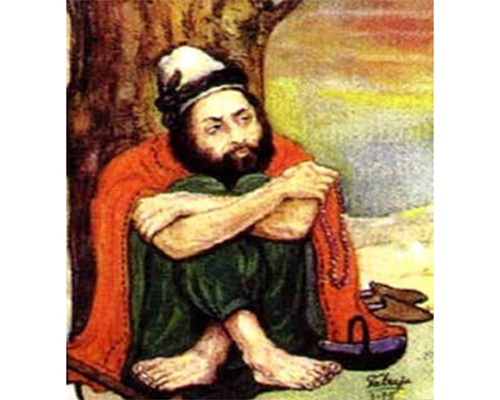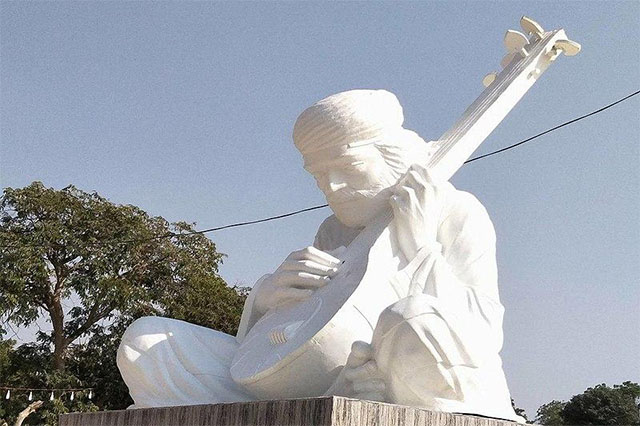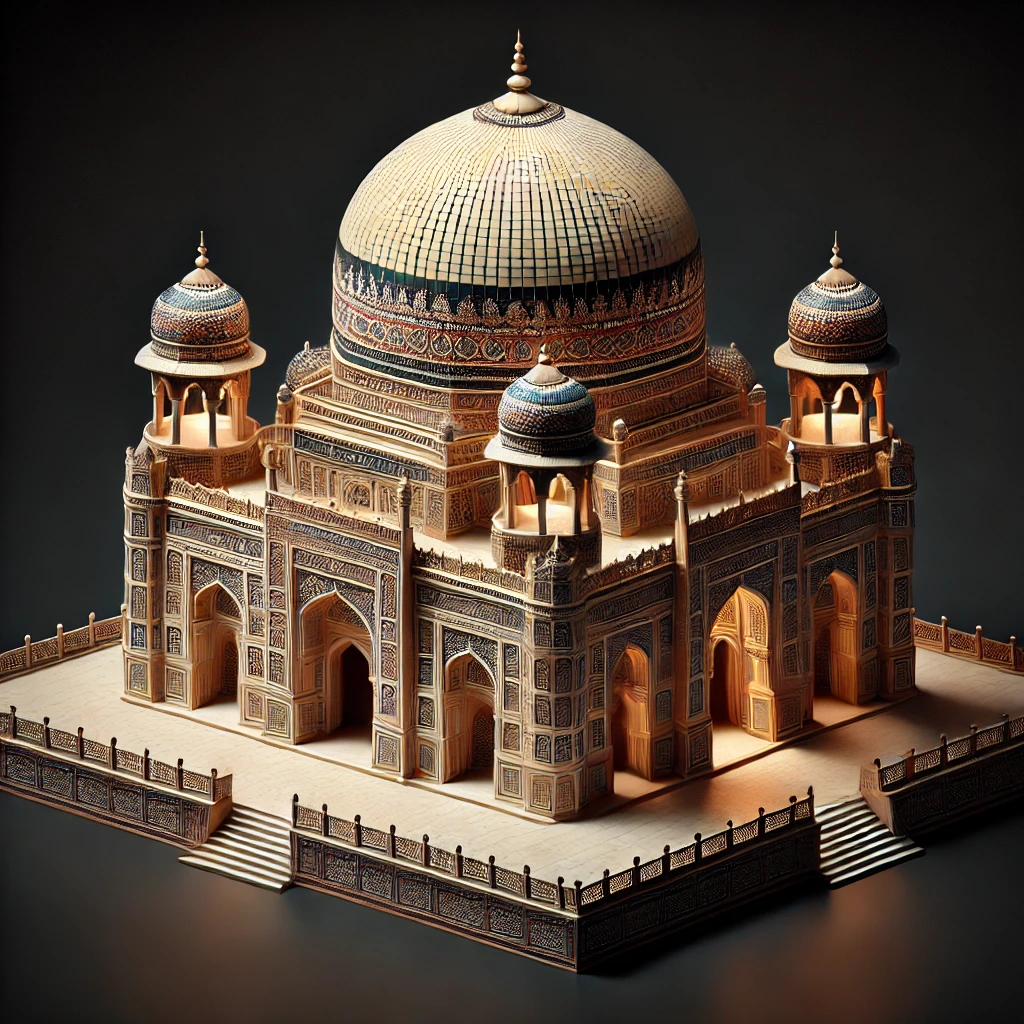
Shah Abdul Latif, a revered Sayed, saint, scholar, thinker, observer, mystic, and prominent poet of spiritual and intellectual depth, was born in 1102 A.H. (1689 A.D.) at Hala Haveli near Khatiyan village in the Hala Taluka of Hyderabad District, Sindh. His ancestry traced back to Herat in Afghanistan. One of his forebears, Mir Hyder Shah, traveled to Sindh, married there, and stayed in Hala for about three and a half years before returning to Herat. Shah Abdul Latif’s father, Sayed Habib Shah, later relocated from Matyari to Bhainpur to establish spiritual connections with the pious Makhdum Bilawal, distinct from Makhdum Bilal of Dadu district who had passed away earlier during the Arghun reign.
The poet’s education began at the madressah of Akhund Noor Muhammad Bhatti, located about six miles from his home. While it is unclear whether his formal education continued to completion, claims that he lacked schooling are baseless. A study of his Risalo reveals his extensive knowledge of the Quran, traditions, and Sindhi language, along with proficiency in Persian and familiarity with Sanskrit, Saraiki, Urdu, and Baluchi. These achievements position him as one of Sindh’s great scholars. He often carried copies of the Quran, the Masnavi of Maulana Rumi, and the Risalo of his great-grandfather Shah Abdul Karim of Bulri, reflecting his literary and spiritual pursuits.
At the age of 21, Shah met nomadic ascetics on the Ganjo mountain near Hyderabad and joined them in their travels through Hinglaj, Junagadh, Lahut, Lakhpat, Jaisalmer, and the Tharparkar desert. These journeys enriched his spiritual understanding and poetic expression. He concluded that spiritual evolution and reunion with Allah required inner reflection rather than external wanderings.
In 1713 A.D., Shah married Bibi Saidah Begum, the daughter of Moghul Beg of Kotri, in a love marriage. Despite a harmonious life, they had no children. Following Bibi Saidah’s death, Shah chose not to remarry, despite encouragement from his disciples.


In 1742 A.D., Shah settled on a sandy mound, known as the Bhit, despite opposition from local religious figures. He built houses for himself and his followers there. That same year, after his father’s death, he permanently moved to the new settlement.
Shah Abdul Latif was influenced by the Qadri, Chishti, Suhrawardi, and Naqshbandi schools of thought. His poetry embodies the doctrine of wahdatul wujud (Monism), emphasizing unity with Allah. He presented his views with such eloquence that they garnered universal acceptance. Drawing inspiration from Sheikh Ibn Arabi, he preached love for Allah and humanity as the bridge between the divine and human realms.
Music held a special place in Shah’s life. He enjoyed musical performances and was skilled in singing and playing the yaktaro, despite occasional criticism from orthodox circles.
Shah denounced extravagance, aggression, and exploitation while advocating for simplicity, hospitality, and unity. His verses promoted love, resistance against tyranny, and the universality of humanity. He emphasized equality, the dignity of labor, and societal solidarity.
Shah’s faith and conduct were rooted in Islamic teachings. Like the Prophet Muhammad, he embodied the Quran’s principles. His poetry and life reflected his belief in Allah, the Prophet, and the Quran, along with respect for all four caliphs and figures like Abdul Qadir Jilani and Bahauddin Zakariya of Multan. While a Sunni by practice, he transcended sectarian divisions, exemplifying the unity of Islamic values.
On 14th Safar 1165 (1752 A.D.), Shah requested his disciples to play music. Wrapped in a sheet, he listened intently. After three days of continuous music, his disciples discovered he had passed away. He was buried on the Bhit, and his mausoleum was later built under the orders of Miyan Ghulam Shah Kalhoro, his disciple and the ruler of Sindh. The site was later repaired by Mir Nasir Khan Talpur and houses the grave of his nephew’s son, Sayed Jamal Shah, alongside Shah Abdul Latif..


